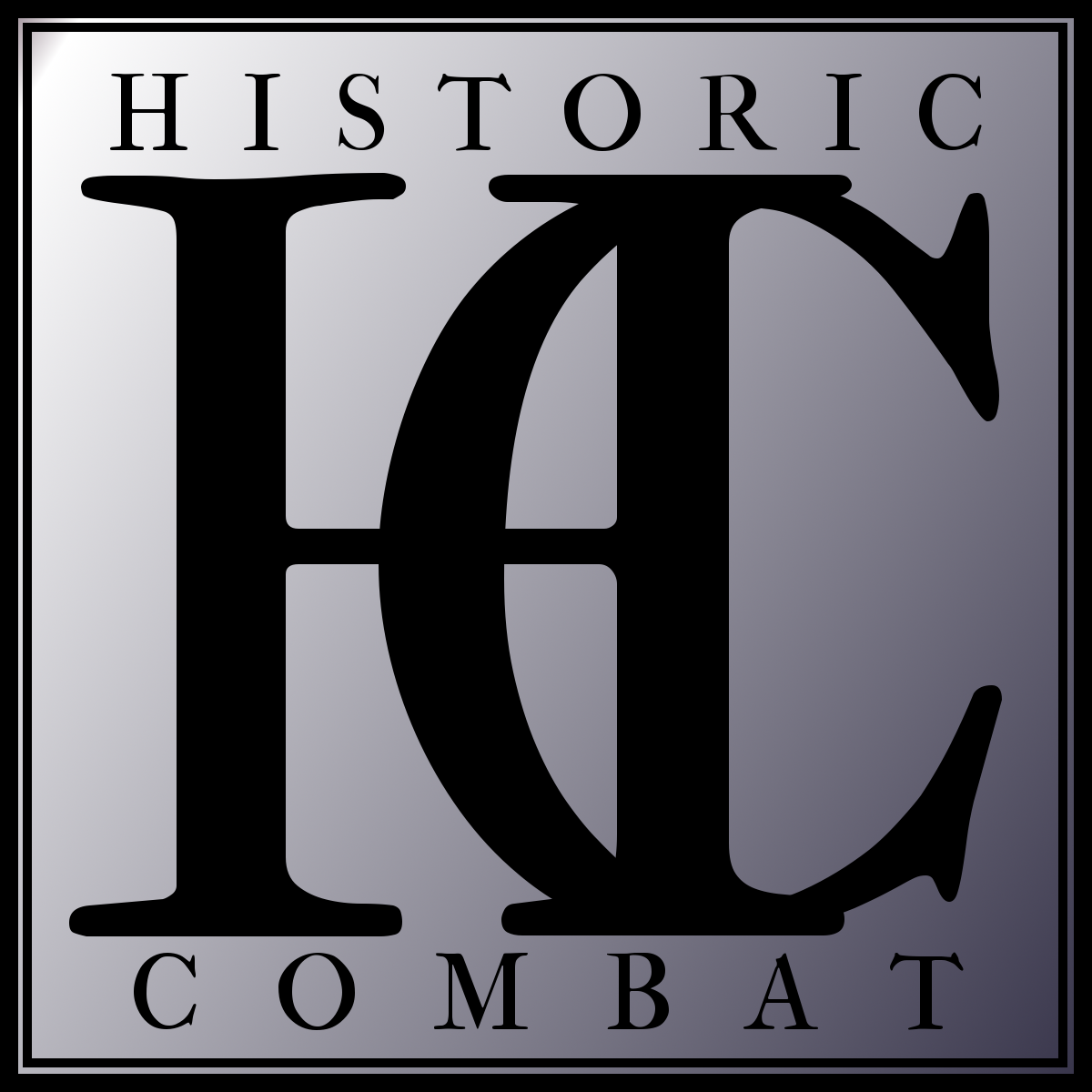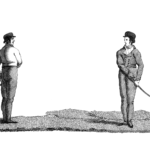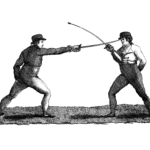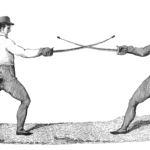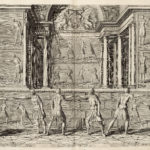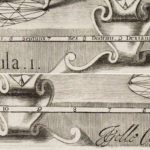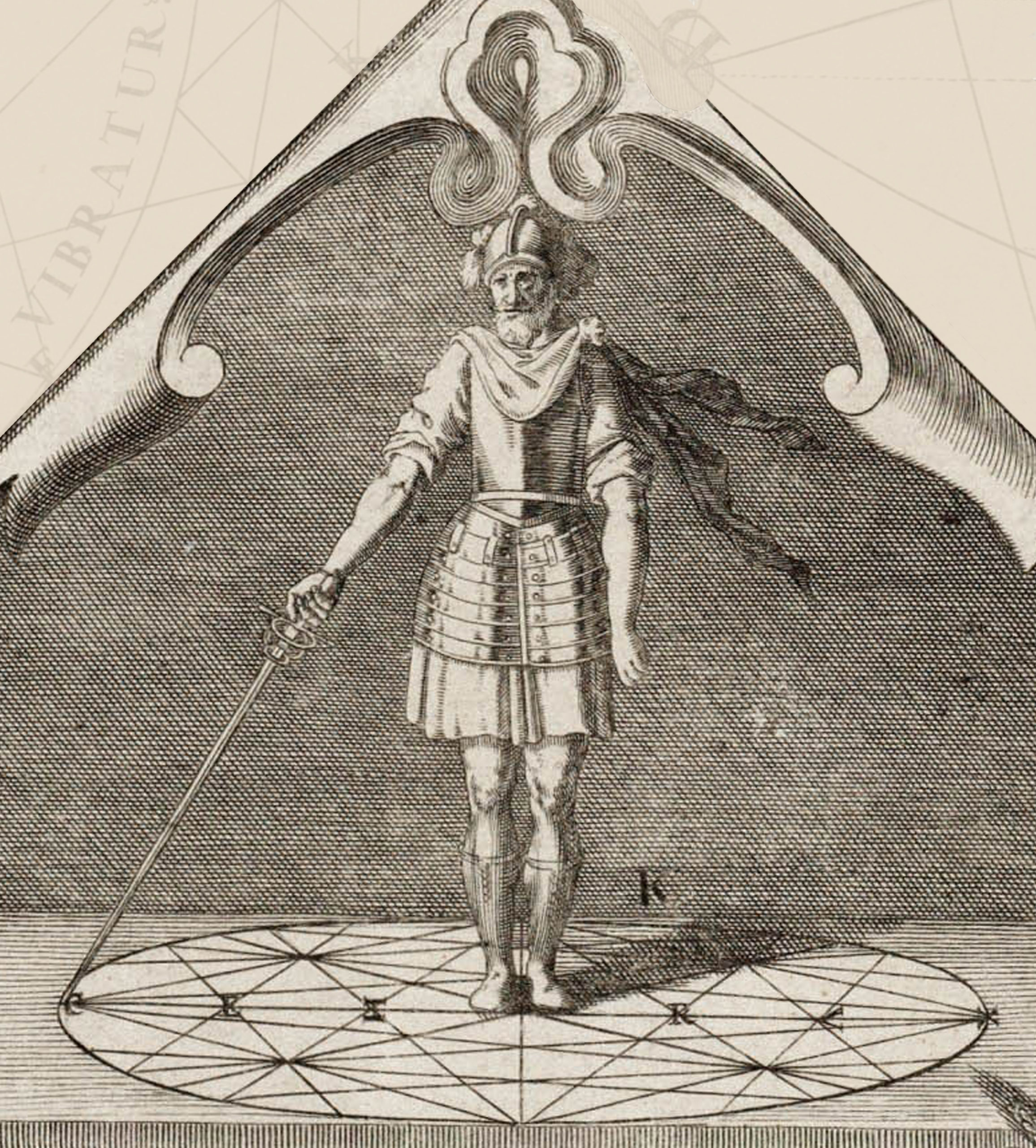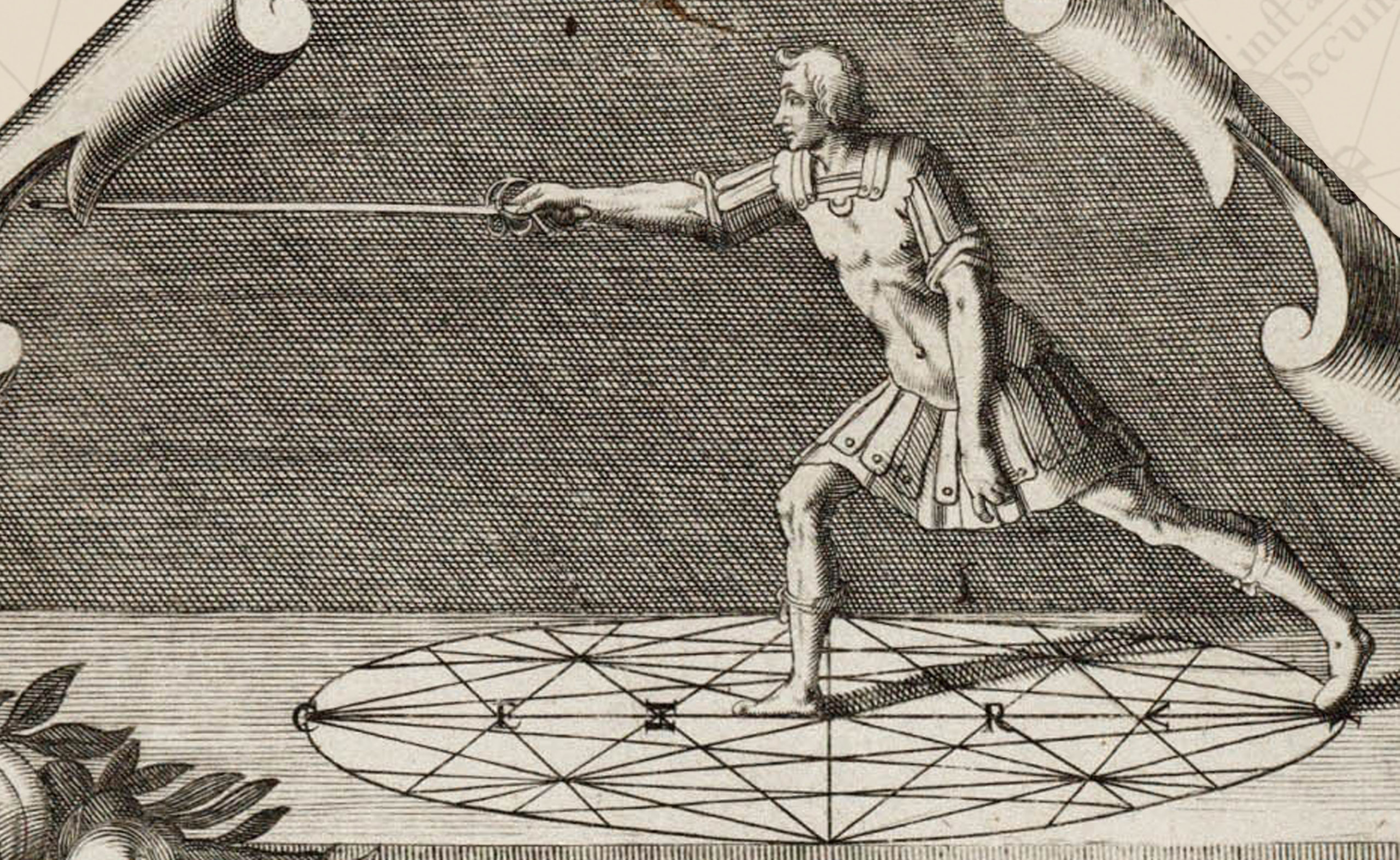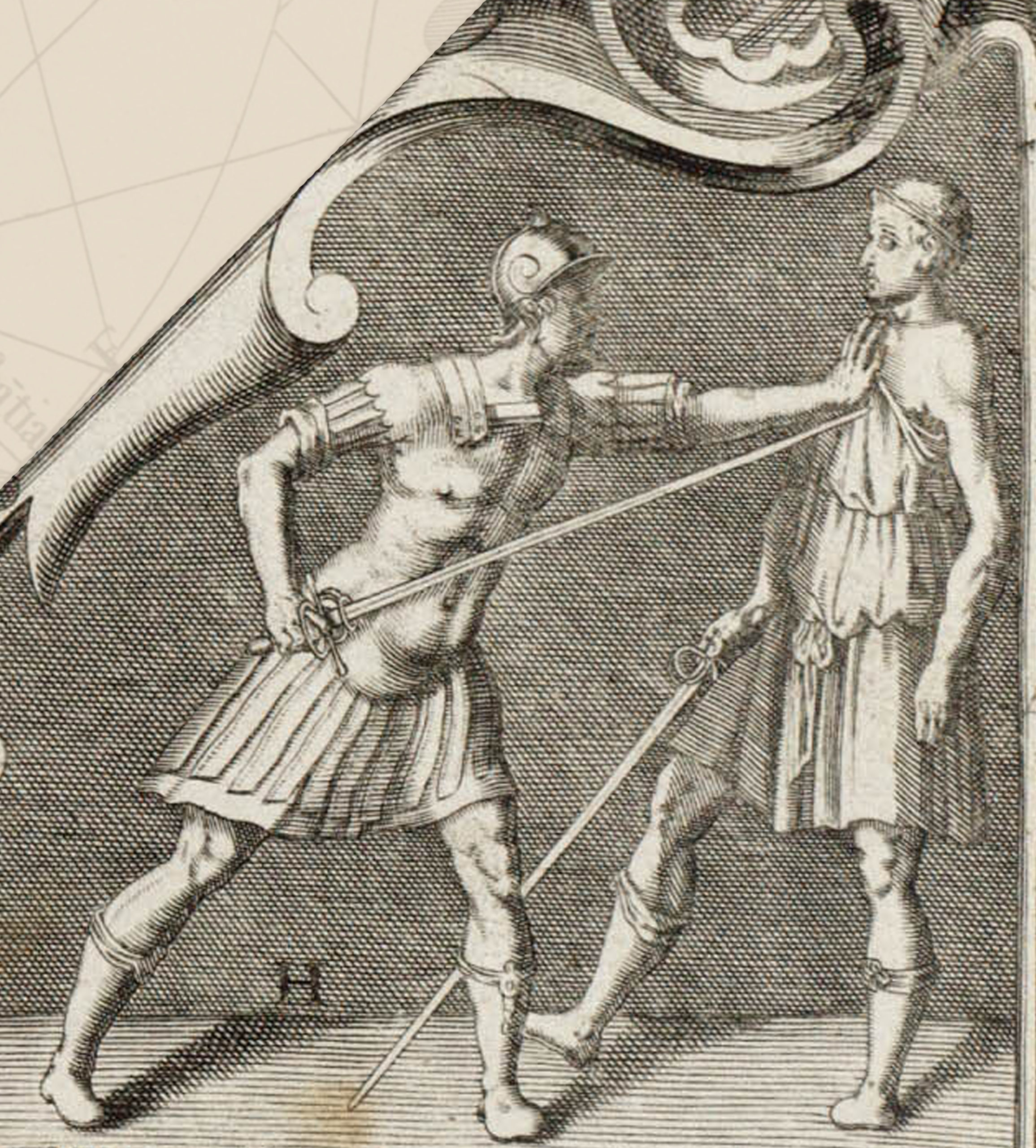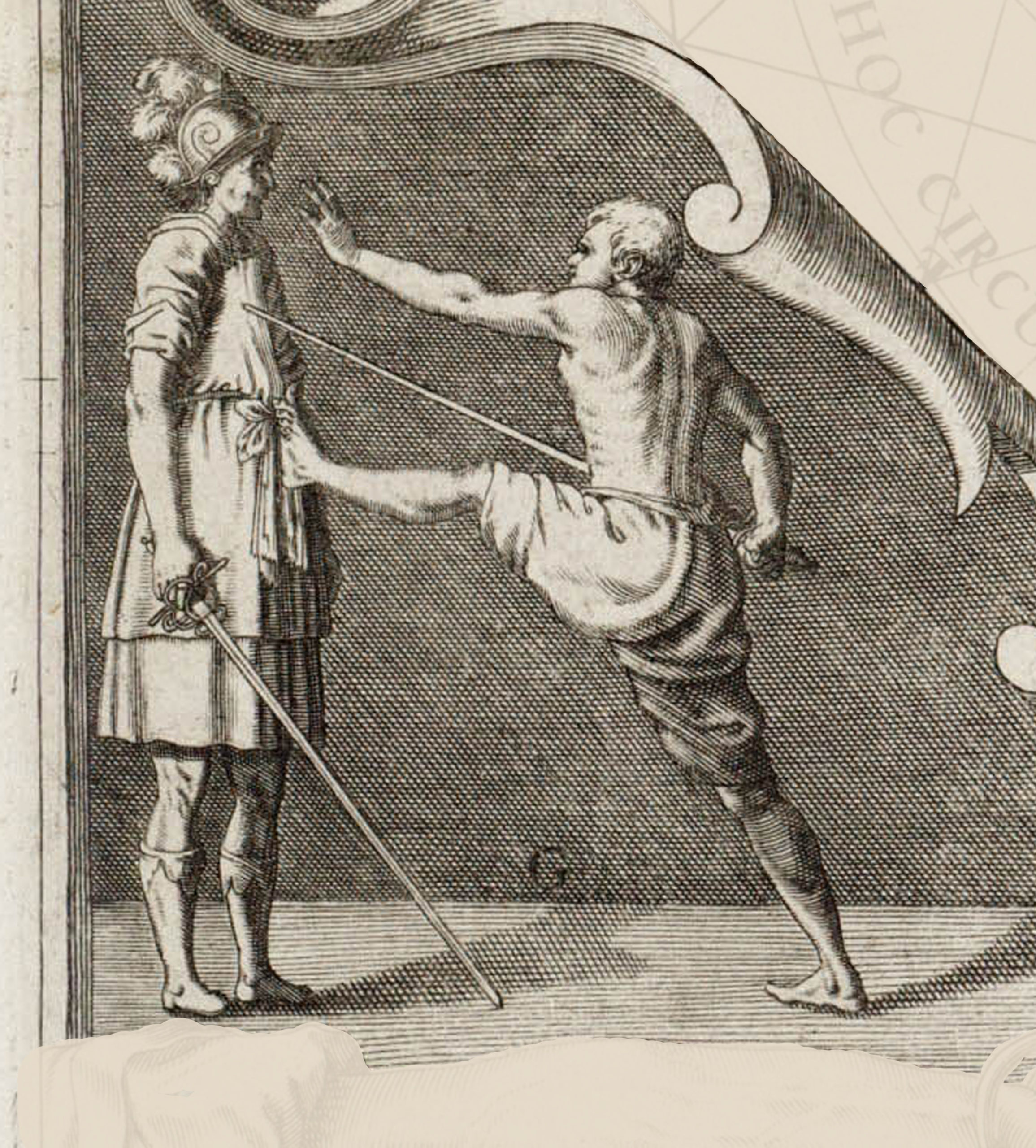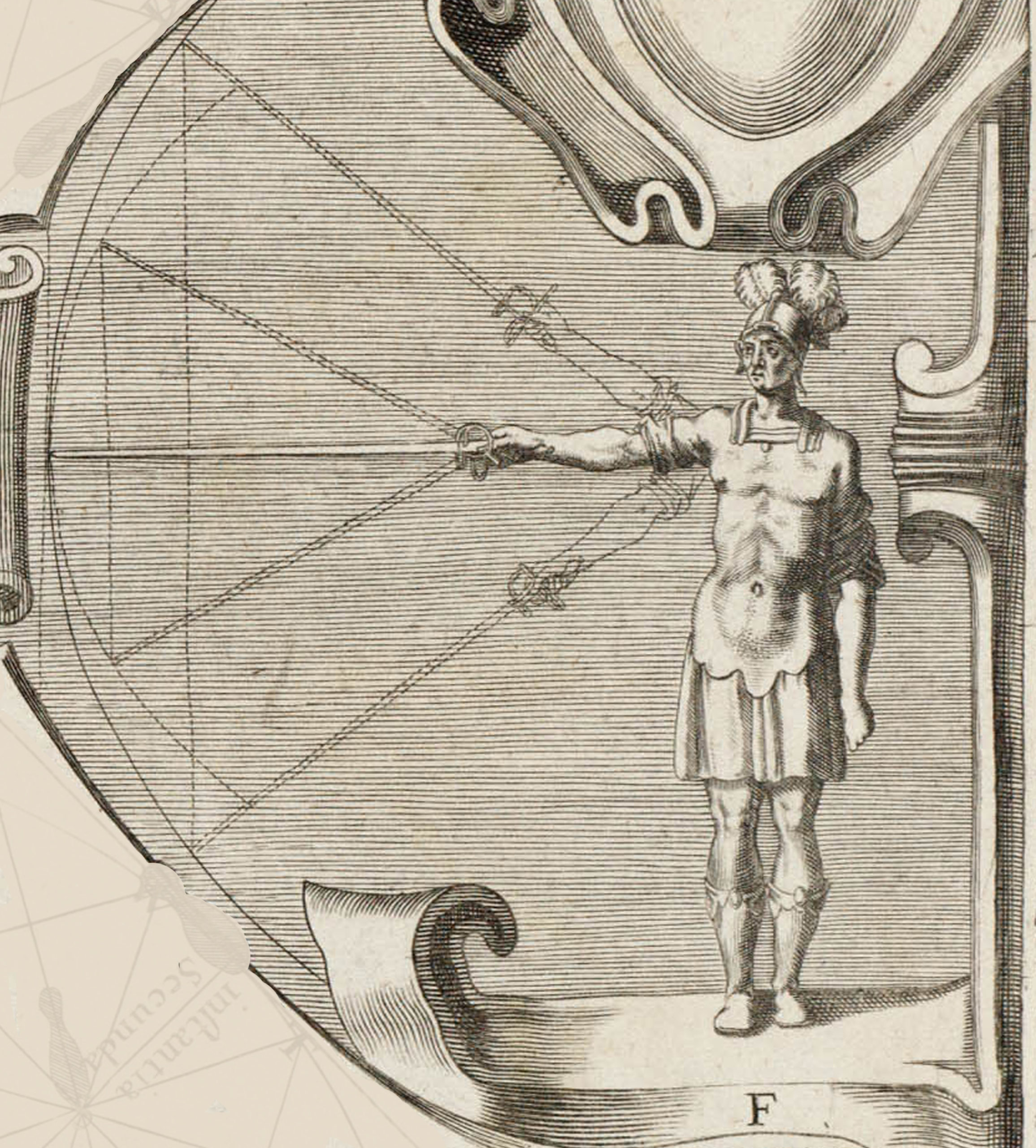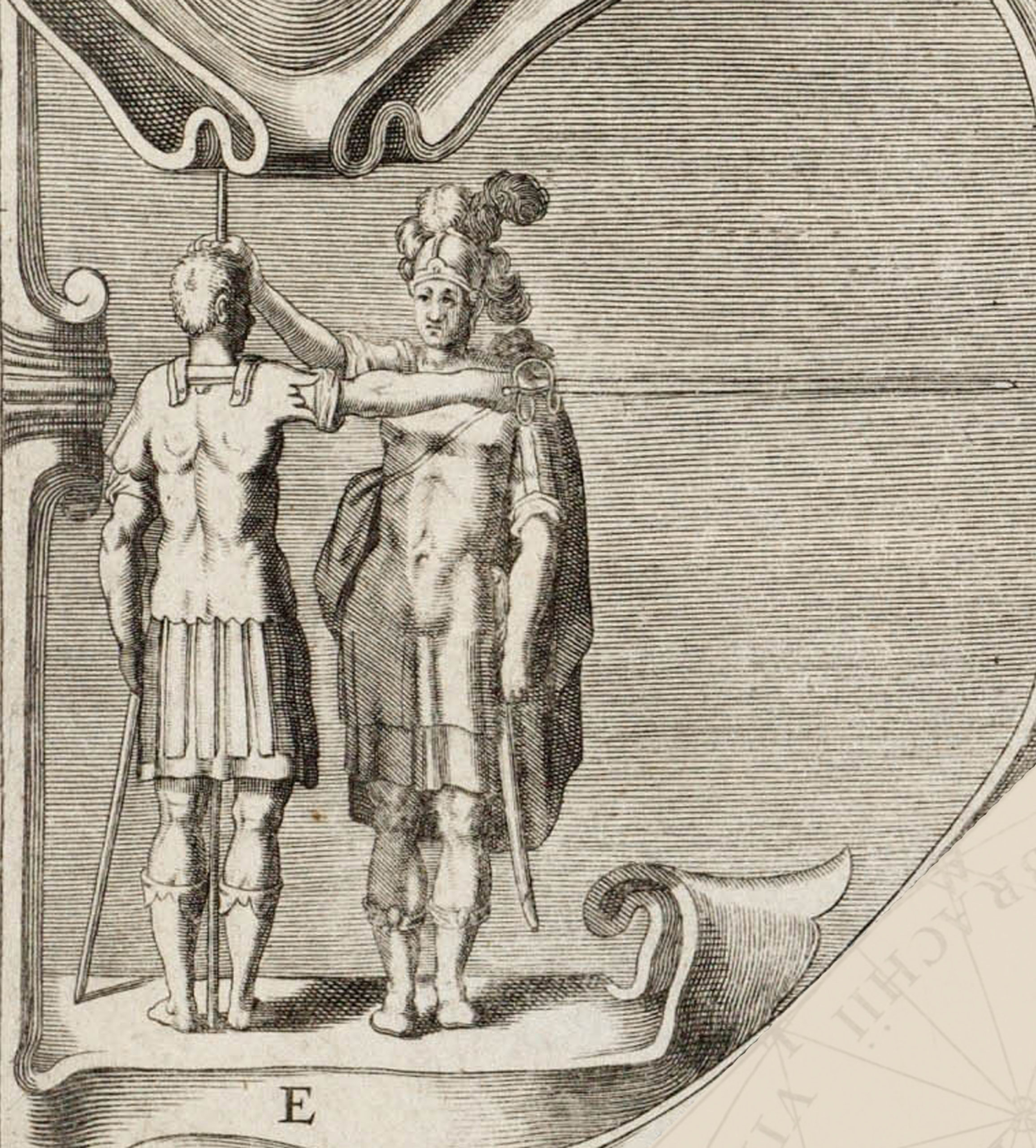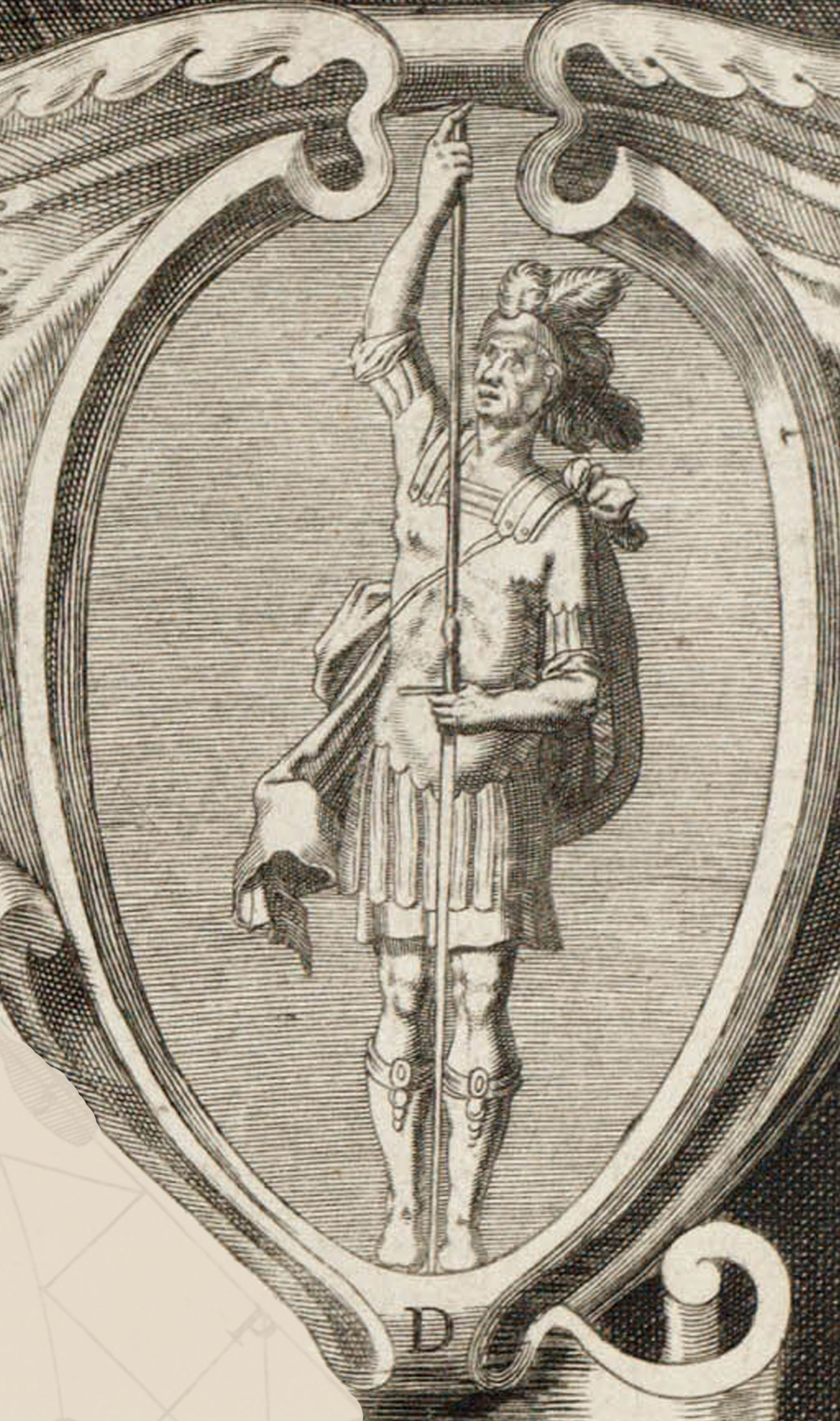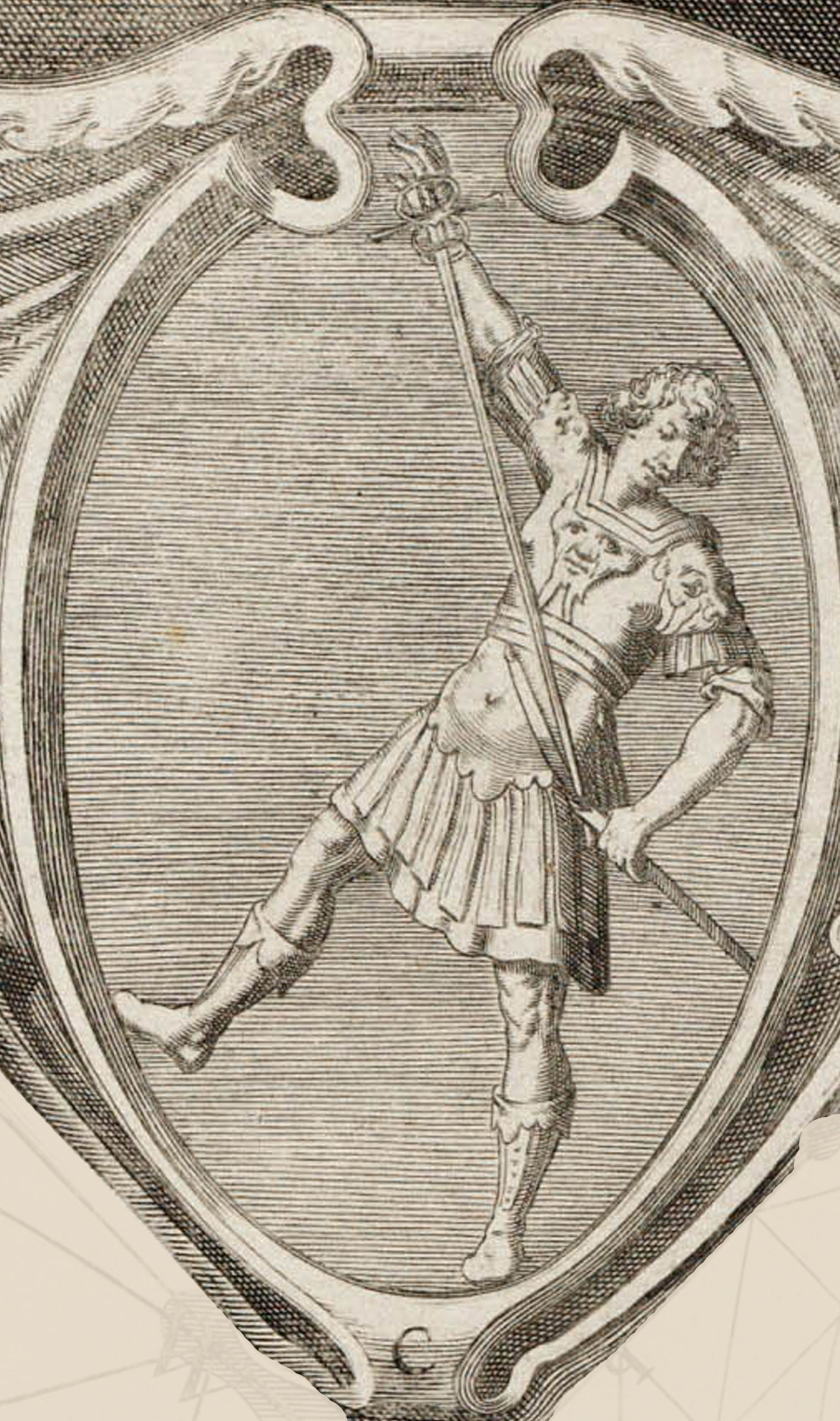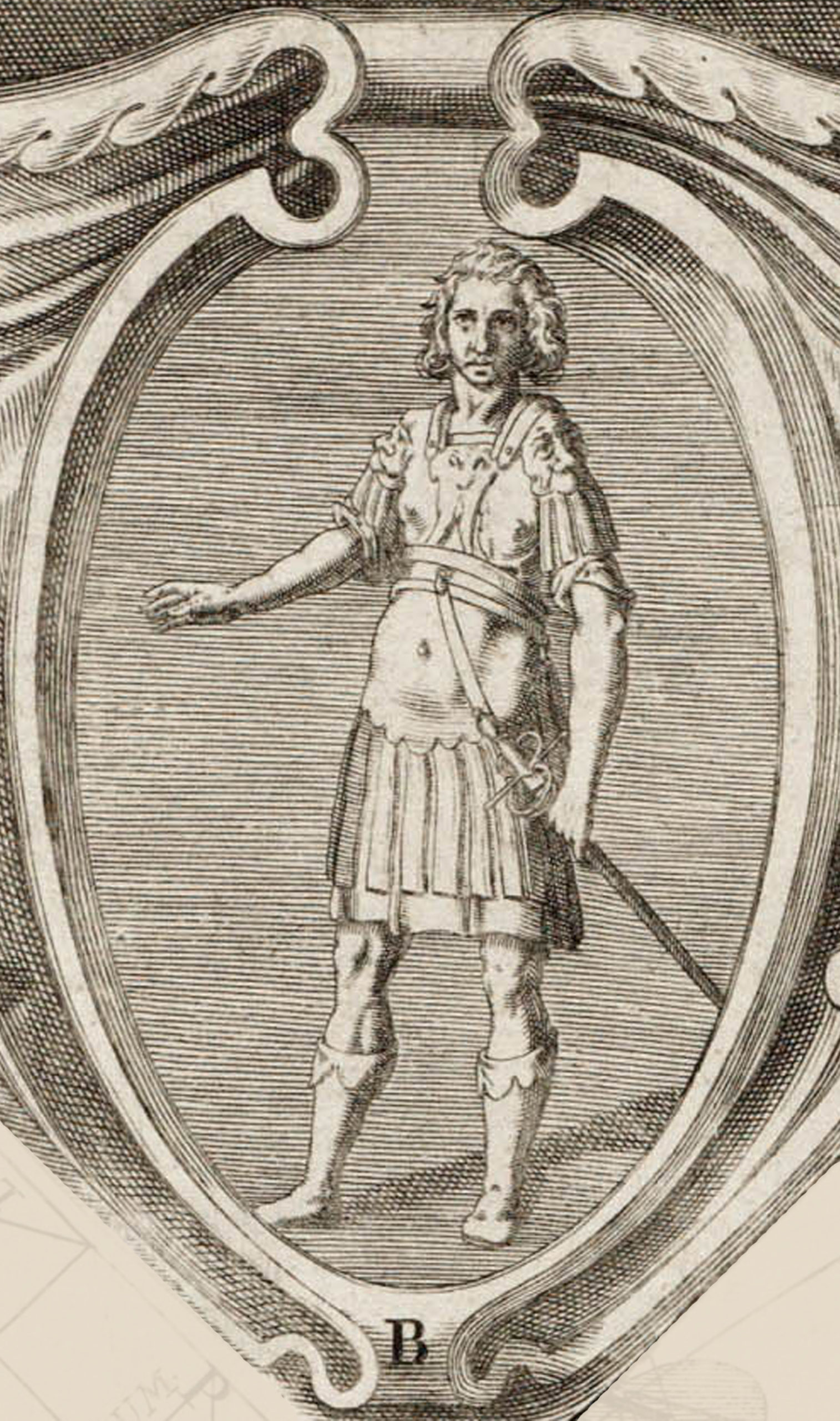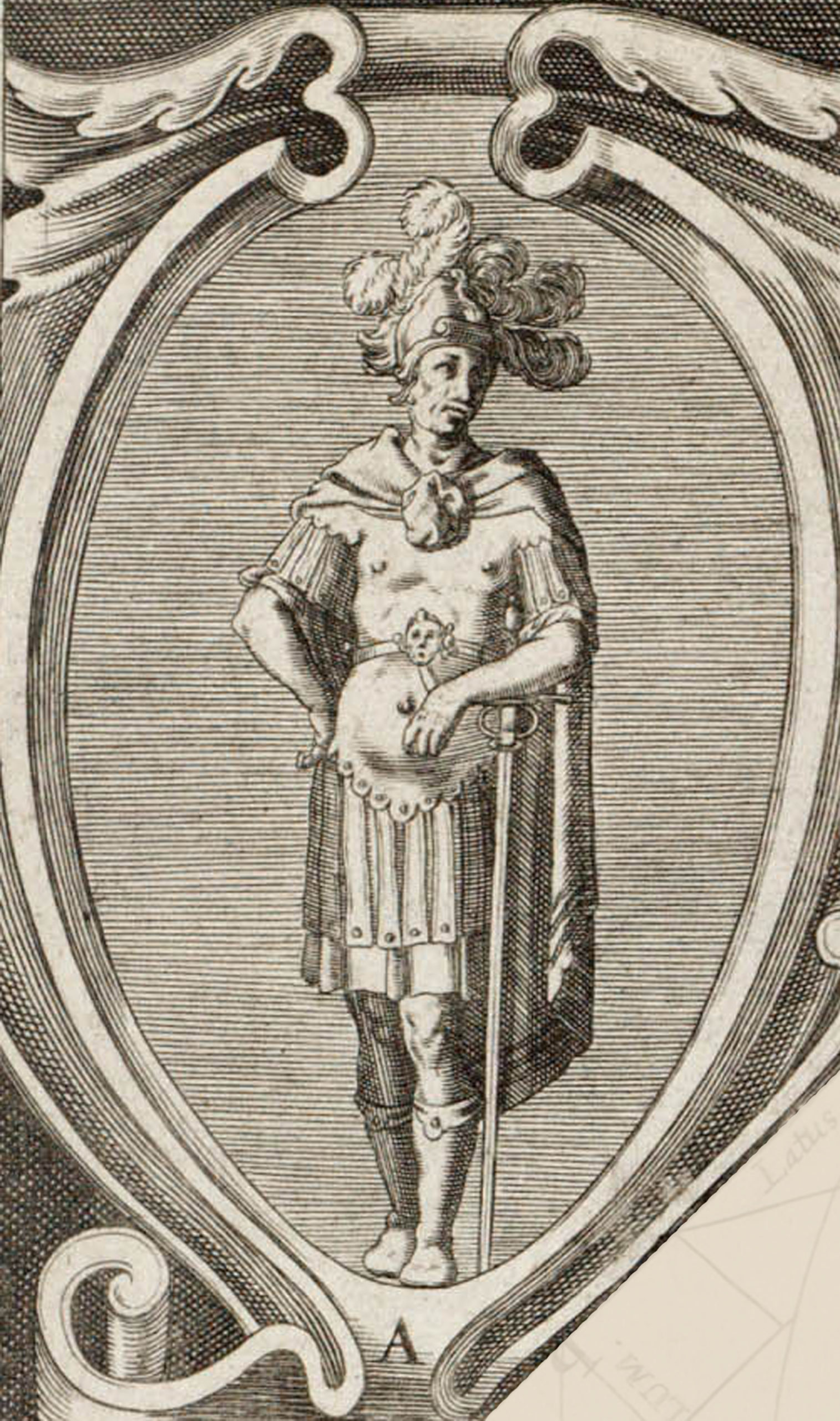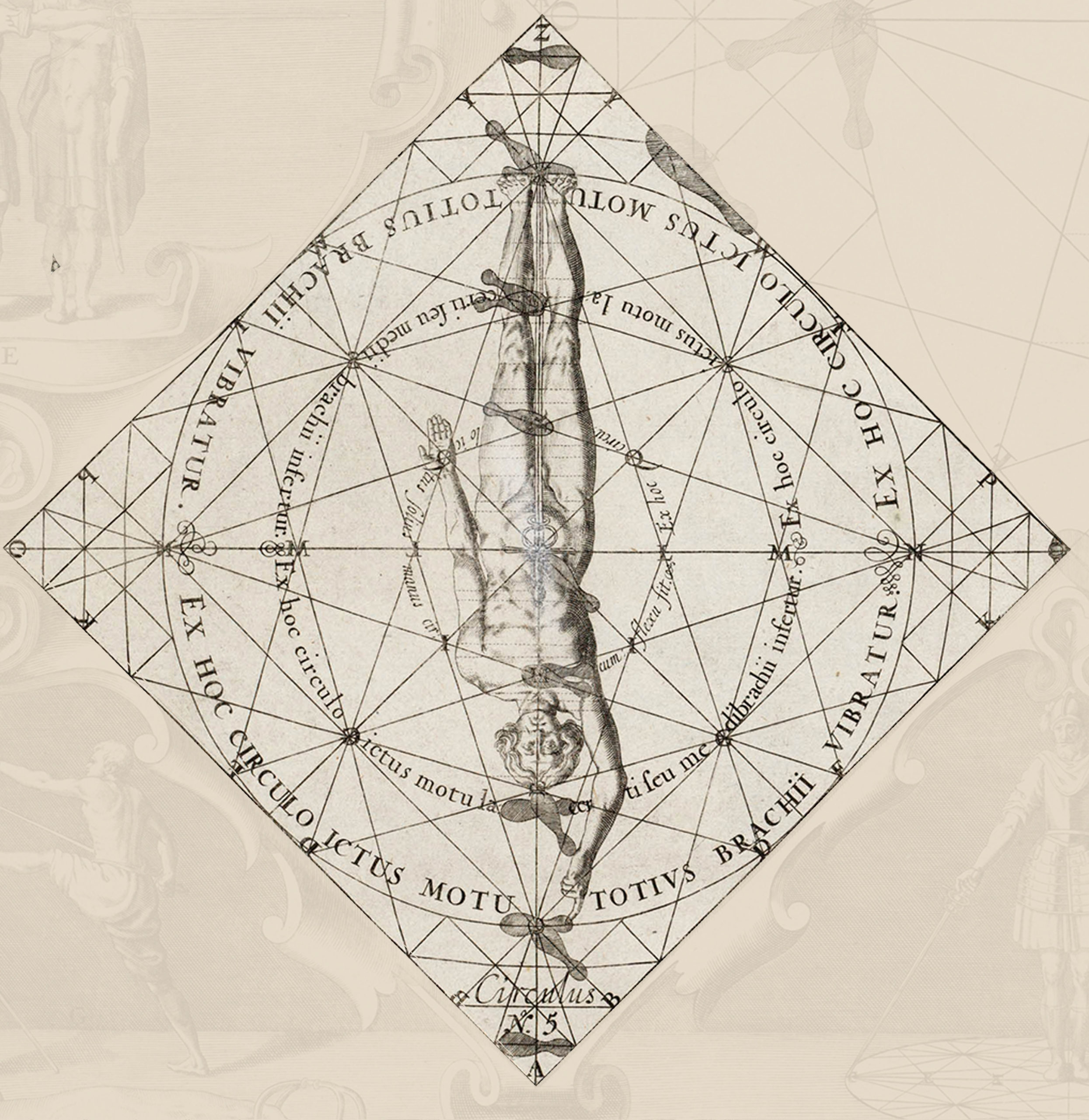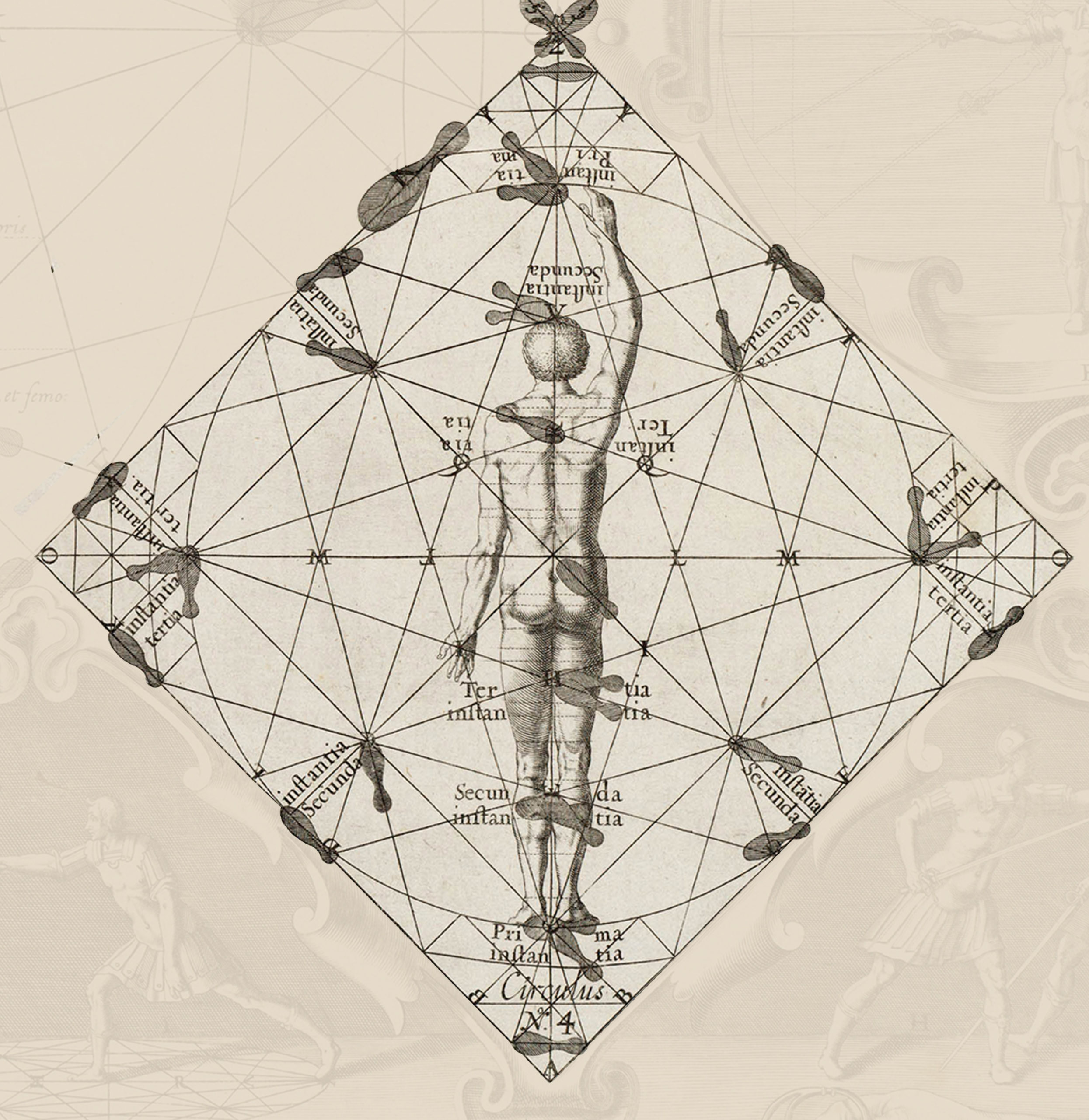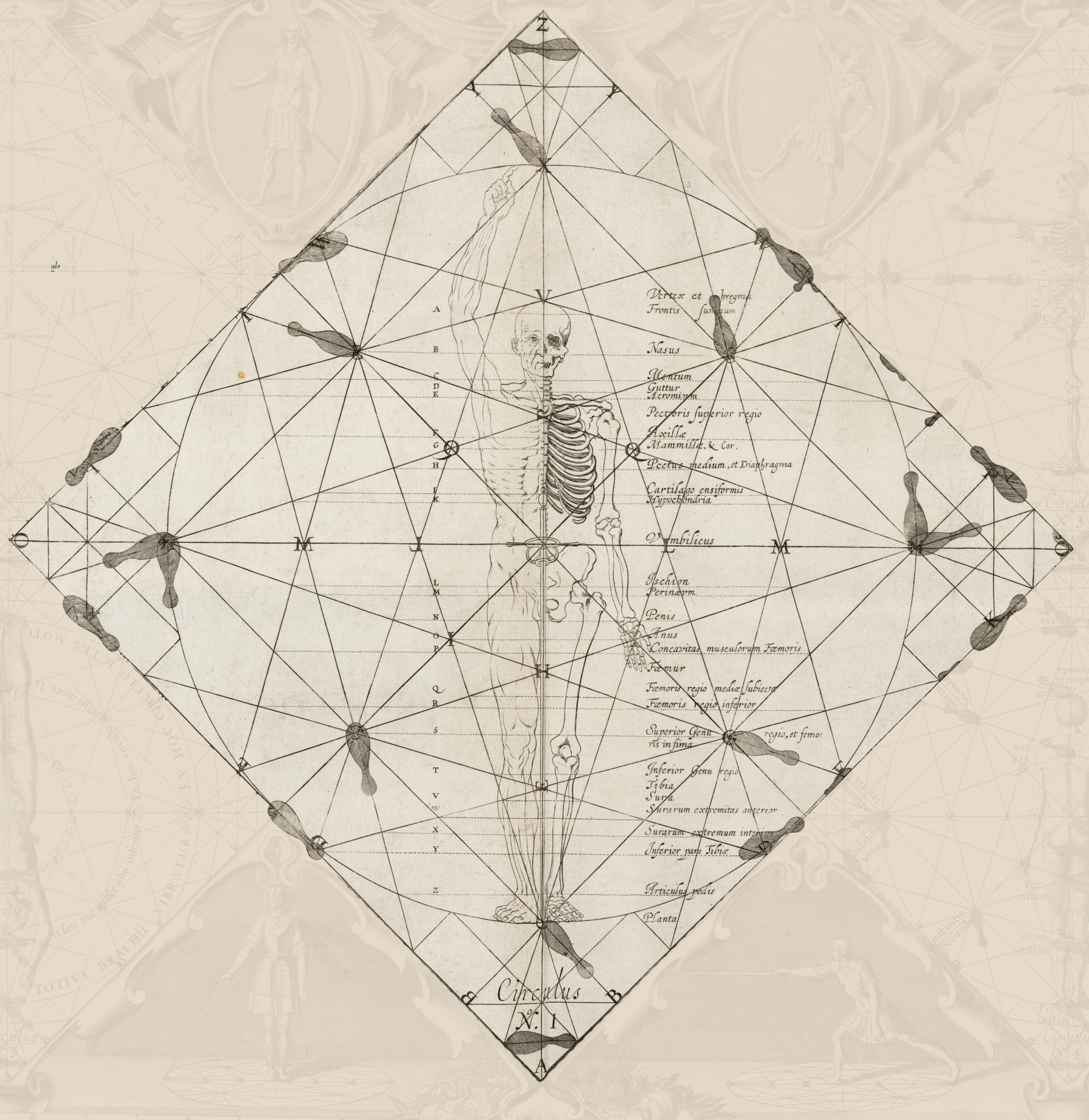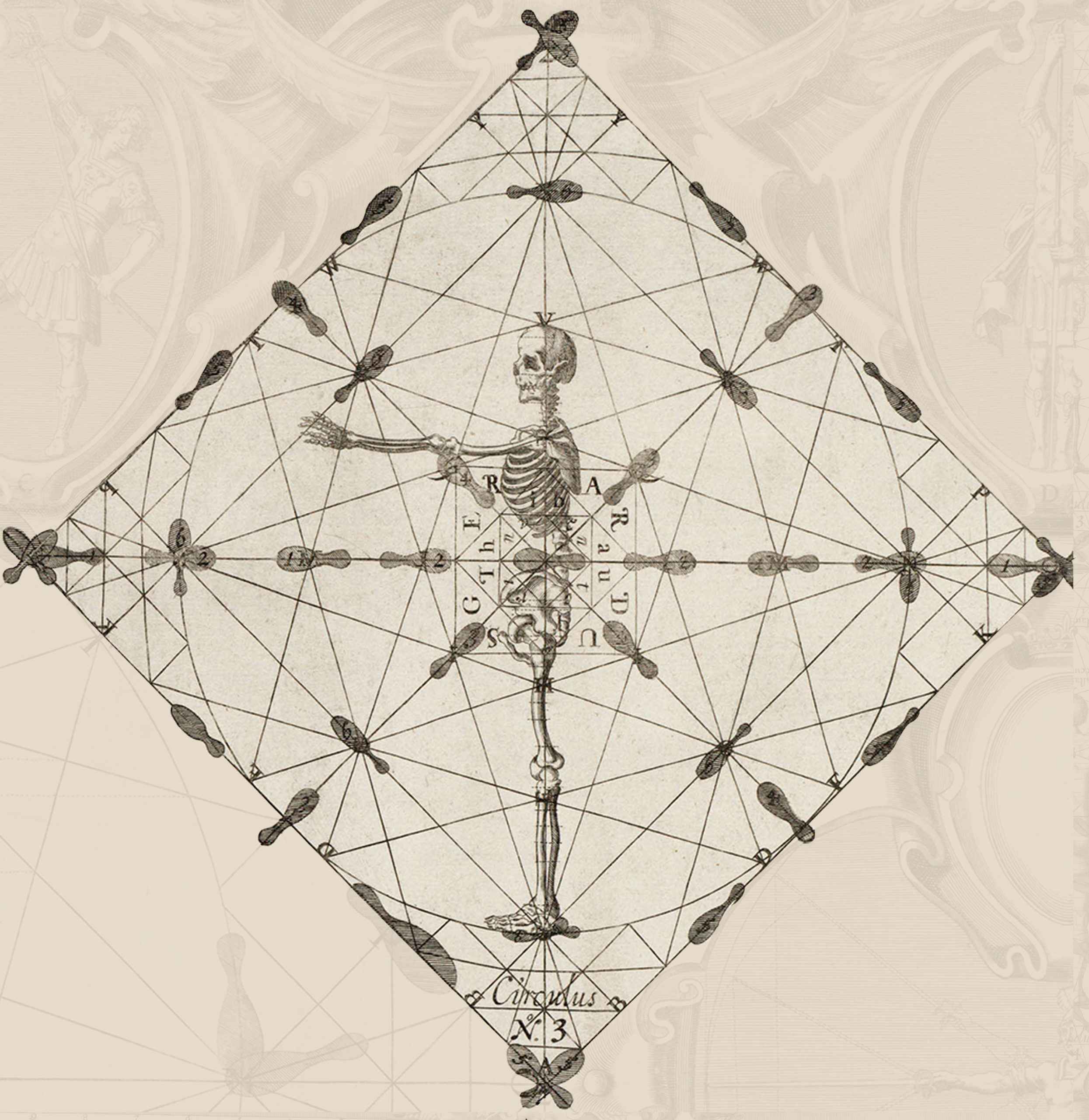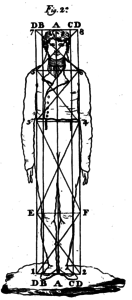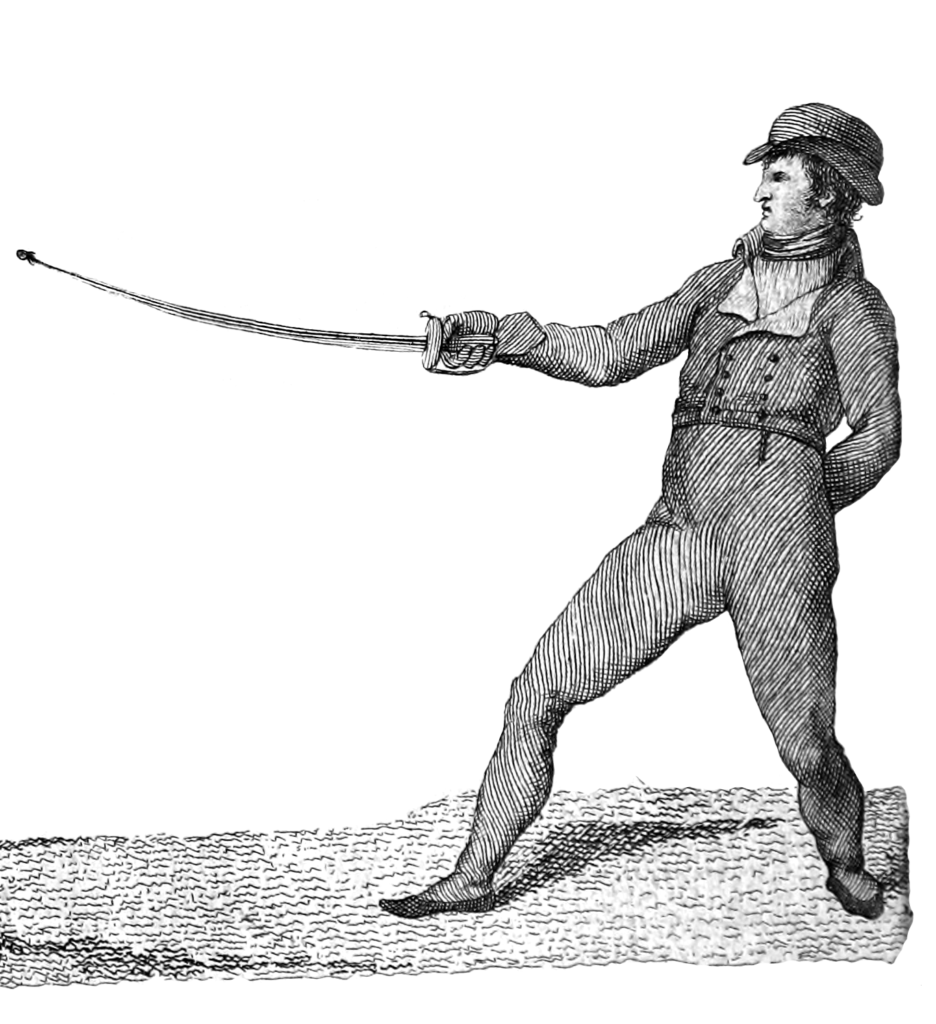358. In the skill of sabre there is an operation called a hand blow, and it consists of an impulsive movement of ones own left hand, on the right of the contrary. This movement has two general objects to know, opposing certain conclusions or replacing others. The practice of many years and the consequent encounters with opponents of little tact, or excessive satisfaction, has taught me that the conclusion is not typically an effective way to end a fight with sharp swords honorably, because, the confession of maturity being quite hard, there are many who, blinded by pride, even looking at the hand of their opponent on the guard of their own weapon, lacking the humility to surrender the laurel of victory to their skillful adversary, try to remove it from that winning hand, employing unrestrained actions and often taunts and disgraces. Is there a man so measured that in such circumstances, incapable of losing the respect of his spectators, and containing that torrent of insults within the instrument that motivates them, would free of another equal insult to his or her impolite competitor?
359. These motives were precisely those inciting my patriotism toward the conservation and civility of my fellows, making me devote many hours in the search of an antidote against these excesses which, unfortunately, are more frequent than they should be. I was presented several resources for my continued application and good end, but as they were not lacking in flaws, I had to discard each successively until reaching the present which has all the security and scope that I had proposed for its object.
360. Although the exercise of arms by the nobility of its end, and the subjects in whom it should lie, could be a practical demonstration of the most zealous policy, it has come to certain hands destined by nature to less honorable exercise, and these are usually concealed with a pompous exterior, it will always be conducive that, in a fight of blunted weapons with unknown subjects, it is preferable to show the hand blows rather than the conclusions, which will be equally useful when it comes to edged weapons with public enemies, in whom excessive power is suspected, to avoid a dangerous dispute, providing the achievement of one of these blows, bearing in mind that if it is not concluded, it will inevitably wound, and secure the executor.
361. I said in the first paragraph that the hand blows oppose certain conclusions, and replace others, because these are also made on offenses and on removals, six on the one, and many others on the other. Not so the hand blows, which are reduced to the number of four. They always need to be done on four removals which are first, second, high third, and high fourth, not that it is impossible to give them greater extension, but that, in the skill, you should not practice or write operations which lack potency and total security. On the contrary, far from being a useful exercise for defense, it would be the art of sacrificing students.
Hand Blow on the Parry of First
362. If, being affirmed in fifth, the enemy steps deeply with a thrust of first or a diagonal cut to the body, take care to, at the same time, advance a step toward him (Plate 12, Points E, D) opposing the thrust of first, carrying the left arm by bending the elbow, to the height of the shoulder with the open hand on the right breast, the palm facing forward. Having made this arrangement, it only remains to extend the arm by discharging a strong blow on the inside of the contrary’s guard, impressing a horizontal movement and, at the same time, withdraw with a Spanish leap back, executing a cut to the head.
Hand Blow on Second
363. If, affirmed in the guard of sixth, the enemy throws a thrust of second or a diagonal reverse to the side, advance on it one place (E, D) with a removal of second and the left arm stretched out on this side, turn away from it enough that the hand is at the height of the median plane, and the palm forward, all in one time. This done, violently discharge a strong blow to the outside of the enemy’s guard, passing at the same time to the points H, G (Plate 12), forming and executing a vertical reverse or a diagonal to the head.*
*For the good formation of this reverse it is necessary, at the same time as the pass to points H, g, to unite the elbow to the right vertical, turning the hand in fourth, and relaxing hand on the sabre considerably so that the point will incline toward the ground by its own weight, lifting it up from there, begins the formation and the execution.
Hand Blow on High Third
364. When the enemy, after one or many shots, discharges a diagonal reverse to the head, advance on it with a removal of high third to the points D, E, and preparing the left hand on the right collateral as stated in paragraph 362, execute a blow equal to that, with the other operations that are explained there.
Hand Blow on High Fourth
365. If the second or another shot of the enemy is a diagonal cut to the head, advance on it to points E, D, forming a removal of high fourth to repair the shot, and, preparing at the same time the left arm as said in paragraph 363, perform the blow, compass, and offense explained there.
366. Reflecting on what was said in the previous paragraphs, it will be noted that the blows of the hand, executed from the inside of the contrary’s guard, are always accompanied by a leap back, and those which are executed from the outside require the same compass as the conclusions. However, when these blows are made in opposition to them, they must always be accompanied by the compass Z, d. Note that, in this case, it is not necessary to advance on the removal because the enemy, in order to conclude on your removal, chose the near measure, and what is done is to appropriate the distance that the other is looking for.Just as the hand blows are not practiced, except on four removes, in the same way, they do not oppose more than the conclusions that are intended to be made on the same. To oppose these blows, there is no other recourse than, at the time of their formation, to withdraw with a Spanish or Italian leap back, or to remove the guard from the place where the enemy’s left hand is directed, forming the removal to the wound that is executed.
